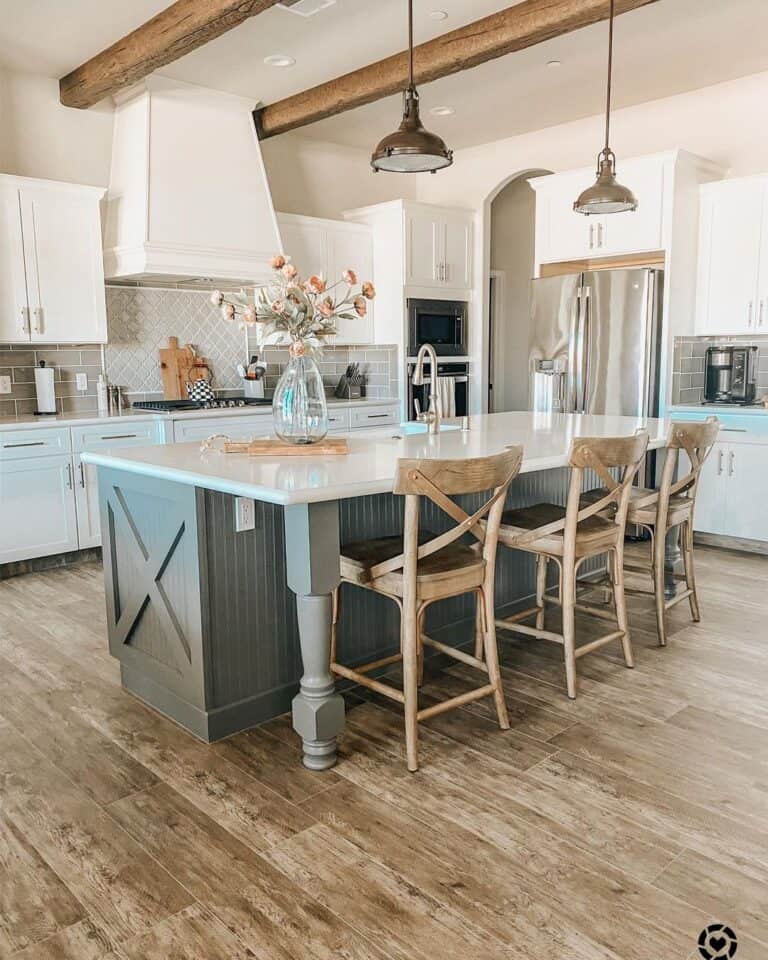Take Full Advantage Of Convenience with Flexible Legs For Kitchen Island Attributes
Take Full Advantage Of Convenience with Flexible Legs For Kitchen Island Attributes
Blog Article
Crucial Elements to Consider When Choosing Legs For Kitchen Island
Picking the suitable legs for a cooking area island includes a cautious assessment of numerous aspects that can considerably affect both performance and aesthetic allure. Among these, the choice of material plays a pivotal role in ensuring sturdiness, while the style should match the existing decoration. Furthermore, factors to consider such as elevation and weight support are important for security and comfort. As we explore these aspects, it ends up being clear that each choice can have far-reaching effects for the general cooking area experience. What subtleties should be thought about in each of these groups to attain the ideal balance?
Material Options
When choosing legs for a cooking area island, understanding the different product options is crucial for accomplishing both visual allure and structural honesty (Legs For Kitchen Island). The selection of product considerably influences not only the longevity of the island but also its general style and capability
Steel legs, usually made from stainless steel or wrought iron, contribute a modern-day and industrial feeling while guaranteeing durability and security. These products are immune to wear and can support considerable weight, making them optimal for bigger islands.
Another alternative is engineered products, like MDF or plywood, which can be a lot more economical while still providing a variety of coatings. They may not supply the same level of stability as strong timber or steel. Legs For Kitchen Island. Products such as acrylic or glass can produce a contemporary appearance, though they may require extra support to ensure stability.
Ultimately, the choice of material for kitchen area island legs should line up with the wanted capability and the total style of the cooking area.
Design And Style

When considering style, the form and surface of the legs are vital. Conical legs can give a feeling of lightness and elegance, while thicker, much more durable legs can share strength and security. In addition, the surface-- be it repainted, stained, or all-natural-- need to complement the cabinetry and countertop products to develop a unified appearance.
In addition, the layout of the legs can also reflect individual taste. Customized or ornamental legs, such as those including elaborate carvings or distinct geometric shapes, can act as centerpieces, adding character and character to the kitchen. Ultimately, the ideal choice will not just boost capability but additionally raise the aesthetic allure, making the kitchen area island a standout function of the home.
Elevation Considerations
Selecting the appropriate height for kitchen area island legs is essential, as it directly influences both functionality and comfort. The standard height for a kitchen area island usually ranges from 36 to 42 inches, aligning with typical countertop heights.

It is likewise vital to represent users' preferences and elevations. Personalizing the height can ensure a comfy experience for all member of the family, making the kitchen area island a more practical and enjoyable room.
Weight Support
Ensuring appropriate weight support for cooking area island legs is important for both safety and performance. The kitchen island usually serves numerous functions, consisting of food preparation, eating, and extra storage space, requiring a durable support framework. When selecting legs, it is vital to consider the total weight capacity required based upon the island's meant usage and the materials that will be positioned on it.
The option of product for look at here the legs plays a significant function in their weight-bearing capabilities. Solid wood, steel, and heavy-duty compounds generally offer premium strength compared to lighter products. Additionally, the style of the legs-- whether they are directly, tapered, or have a pedestal kind-- can influence their ability to disperse weight effectively throughout the framework.
Always seek advice from the supplier's requirements pertaining to load limits to make certain that the legs can maintain the desired weight without endangering security. In recap, selecting kitchen area island legs with appropriate weight support is important for producing a useful and safe cooking room.
Installment and Maintenance
Appropriate setup and upkeep of cooking area island legs are crucial for guaranteeing long life and security. This usually involves safeguarding the legs to the island base using proper fasteners, making certain that the legs are degree and aligned.
Once installed, regular upkeep is needed to preserve pop over to these guys the integrity and appearance of the legs - Legs For Kitchen Island. For wood legs, routine cleaning with a moist cloth and application of ideal timber gloss can stop moisture damage and keep their surface. Steel legs may need a mild cleaning service to remove oil and crud, adhered to by a completely dry cloth to prevent rust formation
In addition, check the legs frequently for signs of wear or damage, such as splits or loose joints. Tightening up screws or bolts as needed can also lengthen the lifespan of the legs. By sticking to these installment and upkeep methods, house owners can guarantee that their kitchen area island stays sturdy and aesthetically appealing for years ahead.
Conclusion

Visual comprehensibility is paramount in picking the style and layout of legs for a kitchen area island, as these aspects greatly influence the overall ambiance of the space. Tapered legs can provide a sense of lightness and style, while thicker, a lot more robust legs can communicate stamina and security.Selecting the appropriate elevation for kitchen area island legs is essential, as it straight impacts both performance and convenience. In summary, choosing cooking area island legs with ample weight support is vital for creating a practical and safe culinary area.
In verdict, selecting legs for a kitchen area island requires careful factor to consider of different aspects, including material choices, style, height, weight assistance, and setup.
Report this page